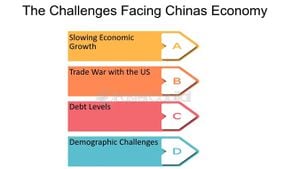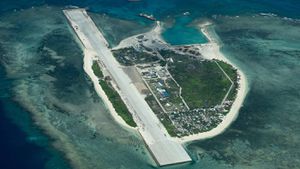The recent agreement between India and China to restore patrolling arrangements along their disputed border to pre-June 2020 status has marked a significant step forward, potentially easing tensions between these two Asian giants. Announced on the sidelines of the BRICS Summit held in Kazan, this deal came on the heels of China finally agreeing to India's long-standing request for disengagement along the Line of Actual Control (LAC). The diplomatic achievement arrives at a time when the geopolitical climate is rapidly shifting, shaped largely by deteriorated relations between India and the United States.
The backdrop of this landmark agreement is steeped in conflict; the border dispute has been contentious especially since the June 2020 clashes at Galwan Valley, where lives were lost on both sides. Despite numerous rounds of military and diplomatic talks, progress had been painfully slow until very recently. The turning point seems to coincide with the souring of Indo-US relations, sparked by incidents such as the allegations of Indian involvement in political sabotage against a US citizen linked to separatist movements.
These diplomatic frictions, including the US’s support for Canada's accusations against India, have bred mutual distrust. Consequently, Beijing has reassessed its strategy concerning India, realizing it can no longer view New Delhi solely as part of the US-led containment policy against China. This shifting dynamic prompted China to adopt a more practical approach to the border issue, paving the way for dialogue.
Historically, China has hesitated to make concessions, fearing it may appear weak and encourage regional adversaries, especially amid sensitive situations like the South China Sea disputes. Nevertheless, with the Indo-US trust flailing, China has recognized the importance of addressing border issues to potentially prevent India from aligning too closely with Washington.
The unraveling of Indo-US relations has proven pivotal, shifting the lens through which both India and China perceive one another. Significantly, China's willingness to negotiate offers insight not just as a response to its own regional ambitions but also takes cues from India’s re-evaluation of its partnership with the US. With relations between New Delhi and Washington now fraught, India seems unwilling to play second fiddle on the international stage.
The US, with its long-held strategy of inadvertently fanning the flames of rivalry between India and China, finds itself at odds as both nations work toward resolution. This is evident as India faces pressures to adopt sanctions similar to those espoused by Washington against Russia, stirring questionables about the depth and future applicability of this partnership.
This recent agreement is not merely about restoring pre-2020 patrols. It signals India's newfound diplomatic maneuverability, one where it doesn't feel compelled to fit neatly within the anti-China bloc the US hopes to create. The underlying tensions, which have been rife due to pressure tactics from the US, might have inadvertently pushed India closer to engaging with China.
A clearer picture emerges from seeing these developments as reflective of larger geopolitical currents. While any military and economic ties between India and the US appear stable, there are whispers of uncertainty over whether the political trust can be rebuilt. If the recent thaw between India and China continues, it could fundamentally alter the Indo-Pacific dynamics and challenge the effectiveness of the US's regional strategies.
For decades, the US has aimed to maintain its influence across Asia primarily through division. Yet, should India and China build on this detente, the scope of their economic and strategic collaboration could substantialize. Here, both countries possess natural complementarities which are ripe for exploration, potentially powering regional growth and facilitating the transition to what many are calling a more multipolar world order.
The restoration of diplomatic and trade connections between the world's two most populous nations might also serve as the foundation for broader regional improvements. With more open lines of communication and less emphasis on territorial disputes, the stage is set for significant cooperation between India and China.
Such dynamics could signify not just the end of hostilities but the beginning of recognition of mutual interests among Asian nations. A partnership here could act as a stabilizing force, challenging the dominance of Washington-led policies and reshaping the global chessboard. Any significant realignment between Asia’s powers would not merely dominate regional headlines - it could substantially redefine America's role and influence.
Looking back, one might argue the US's strategic attempts at escalation have instead pushed India and China closer. The notion of containment may see itself rendered obsolete if the current momentum is sustained. It appears we are stepping toward not just redefined partnerships but also new global power dynamics, where traditional rivalries are gradually replaced by pragmatic collaborations.
For whatever direction they take, the echoed agreements between India and China remain pivotal. Their ability to sort through historical gripes and embrace cooperation will not merely define their futures but will certainly have global ramifications. The international order, as it's been known, might give way to broader shifts influenced by Asian collaboration, ushering the world toward uncharted territory.
The future remains uncertain, particularly concerning whether the US will adjust its approach to the region's shifts. Clearly, prior strategies are yielding diminishing returns, necessitating rethinking. The world now seems increasingly focused on recognizing shared interests and fostering partnerships instead of leaning on containment or coercion.
The restoration of pre-Galwan patrol arrangements heralds not just a resolution to the border tension but encapsulates the complex interplay of regional and global politics. Each move taken by both India and China will undoubtedly ripple beyond Asia, setting the tone for how nations navigate their alliances amid changing power dynamics and presenting prospects once thought unattainable.



